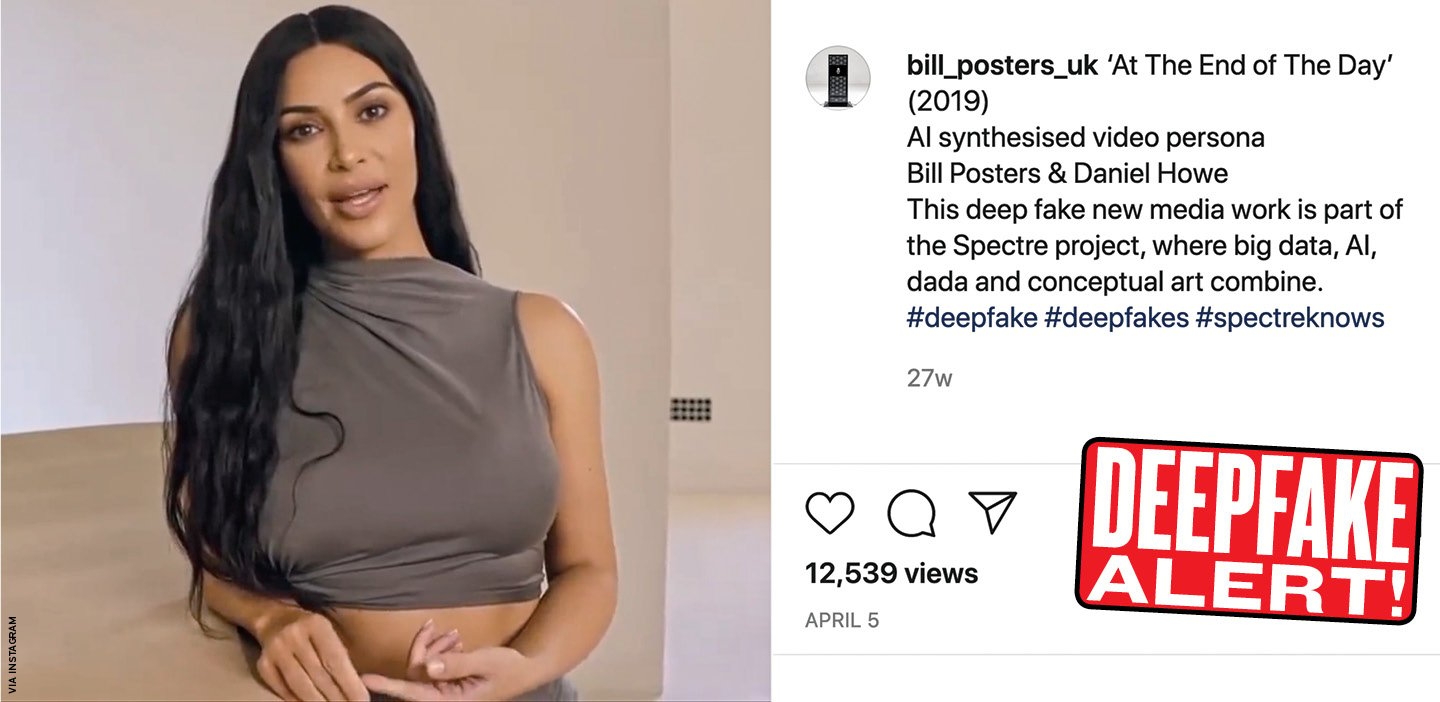Last spring, a GIF making the rounds on social media showed Joe Biden, then the front-runner for the Democratic nomination for president, sticking out his tongue and wiggling his eyebrows at the camera. President Trump was among the thousands who retweeted it.
But the footage of Biden wasn’t real. High-tech tools were used to manipulate his image and make him look ridiculous. This is a “deepfake,” or an ultrarealistic video that’s been altered with artificial intelligence (A.I.).
Although it was clear to most people that this particular clip had been altered, it’s an example of how deepfakes can be used to spread misinformation. People tend to trust video footage, so the technology could be employed to smear someone, making it look like they did or even said something offensive or inappropriate. That’s why California passed legislation last year making it illegal to create or distribute doctored videos, images, or audio of politicians within 60 days of an election.
“Deepfakes are a powerful and dangerous new technology that can be weaponized to sow misinformation and discord among an already hyperpartisan electorate,” California assemblymember Marc Berman, who introduced the bill, said at the time.
Until recently, making realistic-looking deepfakes was a laborious and expensive process used only by big-budget Hollywood movies or researchers working to develop A.I. There were rudimentary tools available—like the face-swapping effect on Snapchat—but nothing that could deceive most viewers.
But now more powerful online tools are springing up, including apps that make it relatively easy to create realistic face swaps and leave few traces of manipulation. Deepfakes of famous people—including former President Barack Obama, Kim Kardashian, and Facebook CEO Mark Zuckerberg—have already circulated online. The videos make it look like the person is saying something upsetting. Kardashian seemed to be admitting that she uses her fans’ data to make money, for example; but it was a voice actor imitating her while deepfake tools made her mouth and expressions line up with the voice.
It’s still not easy to produce deepfakes that completely fool people. With the Biden GIF, many people could tell his facial movements weren’t natural. But as A.I. develops, deepfake technology is getting better at an alarming pace.
“Deepfakes are eerily dystopian,” says Claire Wardle, executive director of First Draft, a nonprofit that addresses misinformation and disinformation, “and they’re only going to get more realistic and cheaper to make.”
Last spring, a GIF of Joe Biden made the rounds on social media. It showed him sticking out his tongue and wiggling his eyebrows at the camera. At the time, he was the front-runner for the Democratic nomination for president. President Trump was among the thousands who retweeted it.
But the footage of Biden wasn’t real. High-tech tools were used to change his image and make him look silly. This is a “deepfake,” or an ultrarealistic video that’s been altered using artificial intelligence (A.I.).
In this case, it was clear to most people that the clip had been altered. Still, it’s an example of how deepfakes can be used to spread misinformation. People tend to trust video footage. That means the technology could be used to smear someone. That means it could make it look like they did or even said something offensive or inappropriate. Last year, California passed legislation to address this. The state made it illegal to create or share doctored videos, images, or audio of politicians within 60 days of an election.
“Deepfakes are a powerful and dangerous new technology that can be weaponized to sow misinformation and discord among an already hyperpartisan electorate,” California assemblymember Marc Berman, who introduced the bill, said at the time.
Until recently, making realistic-looking deepfakes was a difficult and costly process. That’s why it was only used by big-budget Hollywood movies or researchers working to develop A.I. There were basic tools available, like the face-swapping effect on Snapchat. But there was nothing that could trick most viewers.
But now more powerful online tools are popping up. These include apps that make it relatively easy to create realistic face swaps and leave few traces of any changes. Deepfakes of famous people have already circulated online. That includes former President Barack Obama, Kim Kardashian, and Facebook CEO Mark Zuckerberg. The videos make it look like the person is saying something upsetting. For example, Kardashian seemed to be admitting that she uses her fans’ data to make money. But it was a voice actor imitating her. Deepfake tools made her mouth and expressions line up with the voice.
It’s still not easy to produce deepfakes that completely fool people. With the Biden GIF, many people could tell his facial movements weren’t natural. But as A.I. develops, deepfake technology is getting better at an alarming pace.
“Deepfakes are eerily dystopian,” says Claire Wardle, executive director of First Draft, a nonprofit that addresses misinformation and disinformation, “and they’re only going to get more realistic and cheaper to make.”

